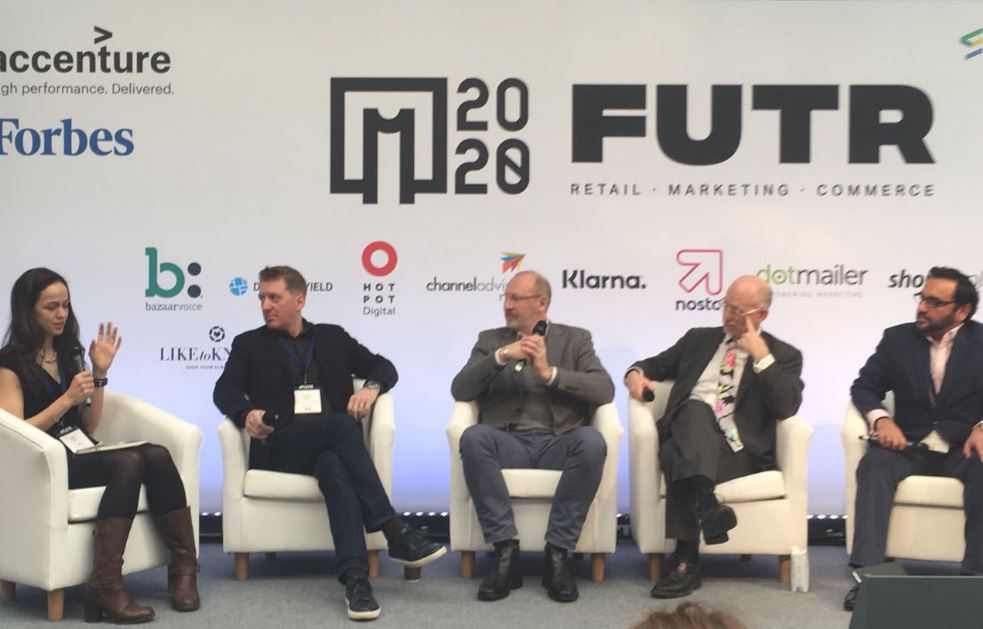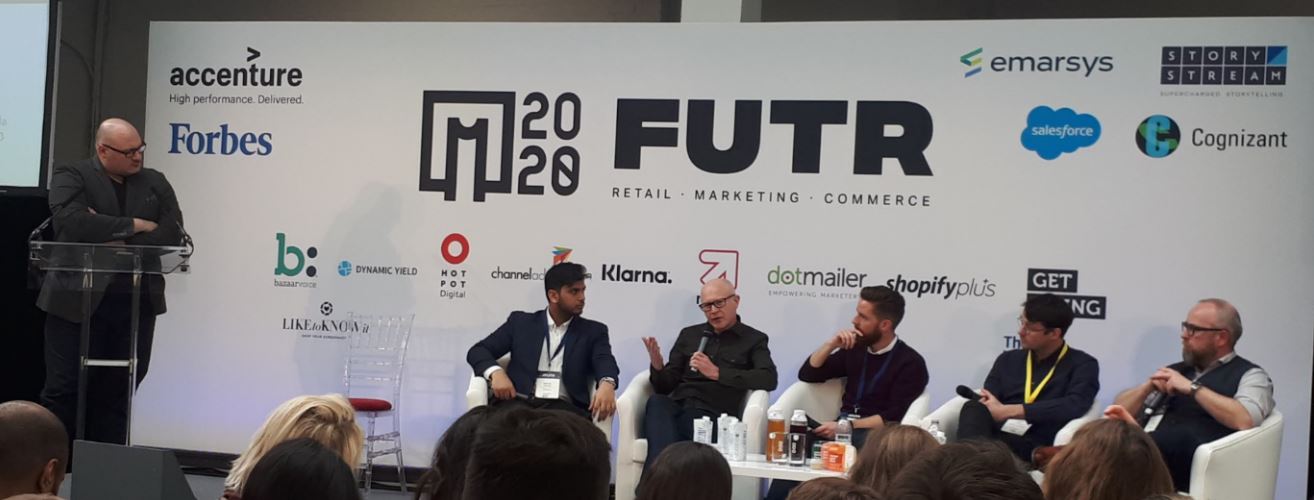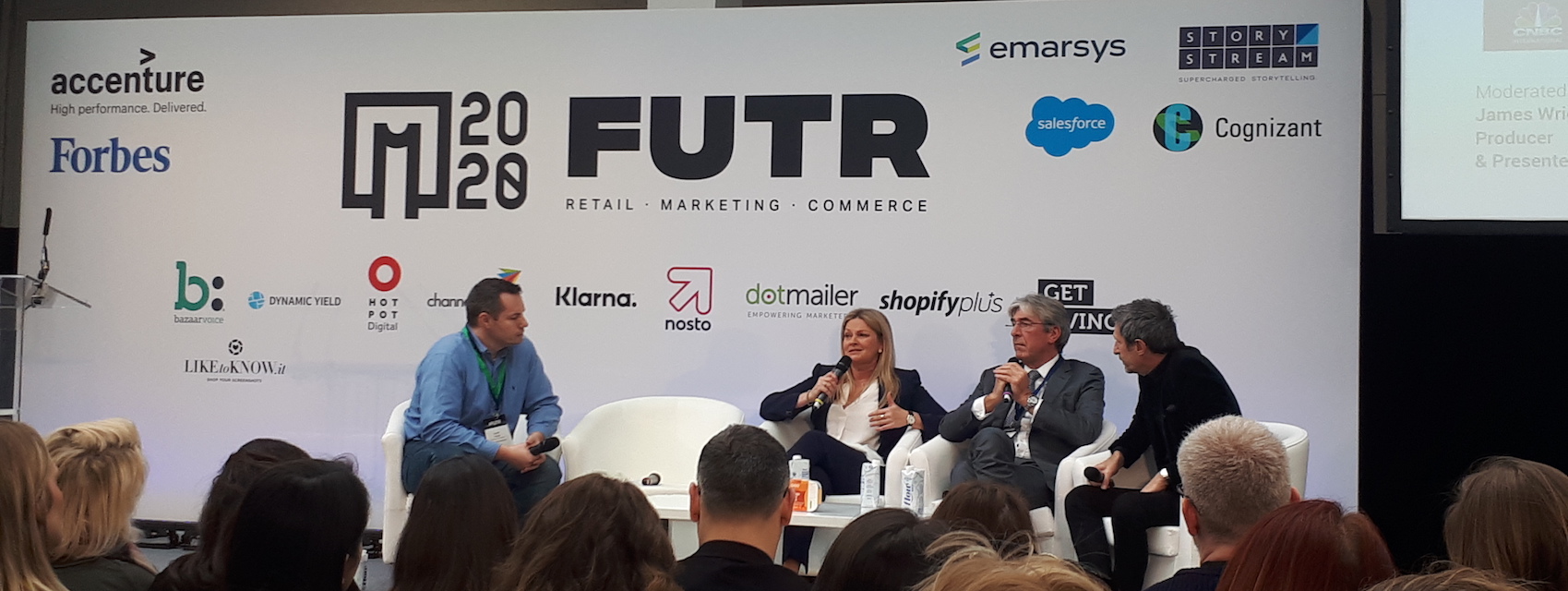After a busy first day at Millennial 2020, Day 2 began with a keynote panel discussing ‘Reinventing the brand’.
Millennial 2020 - Europe Summit Day 2
Julian Burnett formerly of House of Fraser set the tone for the day’s myriad of panels by stating, “retailers are fundamentally physical things”.
What begs to be discussed is given this physicality, how can retailers adapt and evolve to meet the changing needs of their customers?
Digital technology is moving at a rapid pace, and for retailers to be leaders in their industry they need to embrace these advancements and start using new emerging technology surrounding AI, machine learning and data analytics (to name a few buzzwords). “One of the biggest assets in our industry is data” highlighted Julian, adding “We are entering the next period of retail revolution and data will be at the forefront of that.”

Highlights from a jam-packed Day 2 (if you missed Day 1, check out our blog post here) included:
1. Bricks & Mortar Retailers - Be Relevant or Die
According to Michael Beutler, Sustainability Operations Director, Kering, “Retailers are thinking about surviving” with Michael Ward, Managing Director, Harrods adding, “Retailers need to be relevant, or die”.
It’s no secret that bricks and mortar retailers are struggling. Data provided by the BRC-Springboard Footfall and Vacancies Monitor (referenced in the FT) showed that ‘the big losers were bricks-and-mortar retailers where the number of people shopping fell 3.5 per cent in December, the worst monthly result since the economic recovery started to pick up in 2013’.
Smart mirrors, robots and many other digital technologies are now emerging in-store, striving to make shopping ‘easier’, but what else must the high street do to encourage customers into stores rather than into the arms of online?
I sometimes find it hard to find tangible examples of success when it comes to implementing “of the moment” tech, however Sean McKee, Director of eCommerce and Customer Experience, Schuh gave us an interesting case study. The high street shoe business has introduced the ability to take payment at point of sale. Not only has mobilising tills saved, “100 seconds per transaction” it has freed up much-needed space, such as in the Marble Arch branch where the kid’s section is now where the tills used to be.

Given the increasing pressure retailers are facing to keep fresh and change, some may not fully understand the hesitance when it comes to introducing new technology. Sean McKee stressed that it’s a big investment which needs careful planning and execution. According to him, there are three key points to consider:
- The cost of rolling out the appropriate technology
- Establishing the exact use and participation of the technology
- Ensuring the technology has sufficient utilisation from both staff and customers
It’s very easy to get caught up in fancy tech, but what is imperative is making sure it works for you and your business. As Guy Smith, Group Design Director, Arcadia highlighted, “figuring out what you want to measure first is important, then decide how to do it”.
We need to keep sight of the simple fact that new technologies are there to help customers and make experiences more enjoyable. As Michael Ward states, “You can’t forget that experience of being in-store – tech is there to perform a task”. The big advantage that bricks and mortar stores have is that they can interact with their customers in a way that online retailers such as Amazon can’t. Our co-founder Donna North explores this in her most recent blog post on the imminent evolution of brick and mortar retailers.
2. “Retailers Don’t Tell Customers What To Do Anymore - It’s Now The Other Way Round” - Susanne Given, Outfittery
Do people genuinely want to give up their data in exchange for a better experience? Well perhaps, if the customer feels like they have the control.
As highlighted by Skip Fidura, Client Services Director, dotmailer on Day 1, customers are inclined to ask the question, “I give you my data. You give me…?”. This marks what he calls a “contextual revolution”, whereby the customer is becoming all too aware of the value their data holds. Furthermore, they have a growing expectation of exchanging it for something truly valuable.
On a panel titled: ‘Artificial Intelligence and Voice Technology Transforming Commerce’, Nick Wilsdon, SEO Lead, Vodafone Group commented, “If we want virtual assistants we need to give out more data and get used to giving up lots of data”. He is also of the opinion that, “People are willing to give up their data for convenience.”
On the topic of voice tech, what struck me most was the opportunity retailers have to develop the idea of using it for purchasing. According to Hakan Thyr, Director of Strategic Partnerships, EMEA, the current top three requests made to the likes of Alexa are:
- Ask a simple question (e.g. What’s the capital of France?)
- Stream music
- Ask about the weather
The opportunity to expand and develop what he calls “voice commerce” is very exciting, and has huge potential as developments in natural language processing means chatbots are becoming a viable customer solution.
Brands need to get smarter about what to do with the potential goldmine of data that may become available to them, with George Goley, CTO, Sainsbury’s-Argos emphasising,“What’s new is the depth to which we interact with customers - every time they are on their phone, walk into a store or connect with a beacon. There is therefore an enormous amount of data and the retailer wants to be able to express that data.”
3. “Seamlessness” Is An Overused Word, But It’s Still Relevant
People continually speak about “seamlessness”, but what does it truly mean? Although used too frequently, it still holds great importance when broken down as follows:
- Seamless Technology - Implementing tech to ensure the smooth running of the business
- Seamless Customer Experience - The continual effortless interaction customers have with the brand at different touch points
Simon Bell, Managing Director, Diligent Commerce suggested that these two ideas have to link, “To have something truly seamless you need internal [business] seamlessness before it gets to the customer.” He also stated that within businesses, “There should be a single mind of thought that comes from the top (CEO) and this should be felt at every single touch point.” This ensures one overall objective throughout the business so everyone talks to the customer in the same way.
There are many ways retailers look to provide seamless experiences for their customers (scanning barcodes, tills at point of purchase) but there is still a long way to go. Henry Eccles, Head of eCommerce UK, Google, gave a strong viewpoint that retailers aren’t personalising nearly enough given the wealth of data and technology available today. He claimed they were missing a big opportunity to drive sales, and highlighted that, “AI should be built across the fabric of every organisation” - retailers can’t just think about single touch points anymore. Every platform needs to be integrated.
To Conclude…
Personalization is still high on the agenda. Retailers are starting to realise they need to take immediate action by planning how to deliver true personalization across every single touch point and every single device to avoid being left behind.
As put perfectly by Susanne Given, “Retail is going through a seismic shift”. More than ever before, innovation is paramount to improving customer experiences and getting ahead. It’s the way retailers choose to deliver this to meet rising customer expectations, which will be a key indicator of success.

